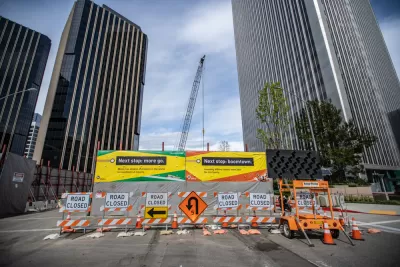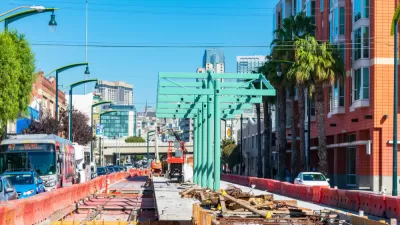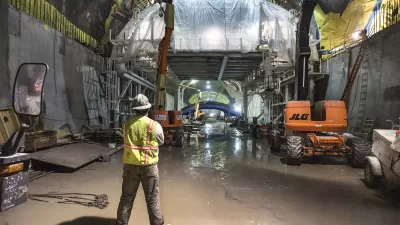Researchers are cataloging the costs of transit projects around the world in an attempt to identify ways to bring costs down and spend transit funding more efficiently.

In an article for Governing, Jared Brey describes the Transit Costs Project, which compares the costs of transit projects around the world to help identify and understand cost variations and how projects can become more cost-effective.
According to the project’s early findings, “The United States is the sixth most expensive country in the world when it comes to building rapid rail projects,” with reasons ranging “from the politicization of project management to the expanding role of consultants, the costs of labor, and efforts to limit disruption to normal traffic flow during construction.”
Governing spoke with project leader Eric Goldwyn, who said, “In the countries that are more expensive than the U.S., they’re building 65 percent or more of their projects underground, and in the U.S., we’re only building like 37 percent of our projects underground. So we’re choosing a less expensive method and we’re still very close to being the most expensive in the world.”
Goldwyn explains that long public review processes drive up costs simply due to inflation, while elaborate station plans also add to costs and reduce the number of stations that can be built under budget. High construction costs matter because they lead to drastically diminished transportation systems and fuel opposition to transit projects.
On what cities are doing right, Goldwyn says “The one thing we see is a heavy emphasis on standardization of design and really trying to economize as much as possible.” When it comes to labor costs, even cities with high worker pay rates can achieve low project costs through labor-saving technologies and other innovations. “It’s not about paying people less. It’s about, don’t spend as many hours doing something, and don’t use as many people to do that thing.”
FULL STORY: Why Are U.S. Transit Projects So Costly? This Group Is on the Case.

Study: Maui’s Plan to Convert Vacation Rentals to Long-Term Housing Could Cause Nearly $1 Billion Economic Loss
The plan would reduce visitor accommodation by 25,% resulting in 1,900 jobs lost.

North Texas Transit Leaders Tout Benefits of TOD for Growing Region
At a summit focused on transit-oriented development, policymakers discussed how North Texas’ expanded light rail system can serve as a tool for economic growth.

Why Should We Subsidize Public Transportation?
Many public transit agencies face financial stress due to rising costs, declining fare revenue, and declining subsidies. Transit advocates must provide a strong business case for increasing public transit funding.

How to Make US Trains Faster
Changes to boarding platforms and a switch to electric trains could improve U.S. passenger rail service without the added cost of high-speed rail.

Columbia’s Revitalized ‘Loop’ Is a Hub for Local Entrepreneurs
A focus on small businesses is helping a commercial corridor in Columbia, Missouri thrive.

Invasive Insect Threatens Minnesota’s Ash Forests
The Emerald Ash Borer is a rapidly spreading invasive pest threatening Minnesota’s ash trees, and homeowners are encouraged to plant diverse replacement species, avoid moving ash firewood, and monitor for signs of infestation.
Urban Design for Planners 1: Software Tools
This six-course series explores essential urban design concepts using open source software and equips planners with the tools they need to participate fully in the urban design process.
Planning for Universal Design
Learn the tools for implementing Universal Design in planning regulations.
Ascent Environmental
Borough of Carlisle
Institute for Housing and Urban Development Studies (IHS)
City of Grandview
Harvard GSD Executive Education
Toledo-Lucas County Plan Commissions
Salt Lake City
NYU Wagner Graduate School of Public Service





























